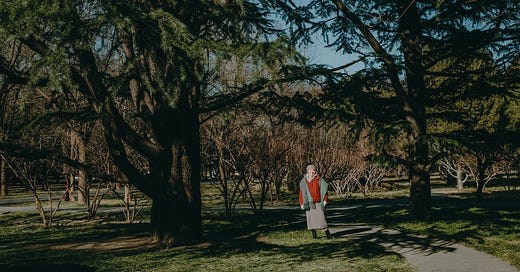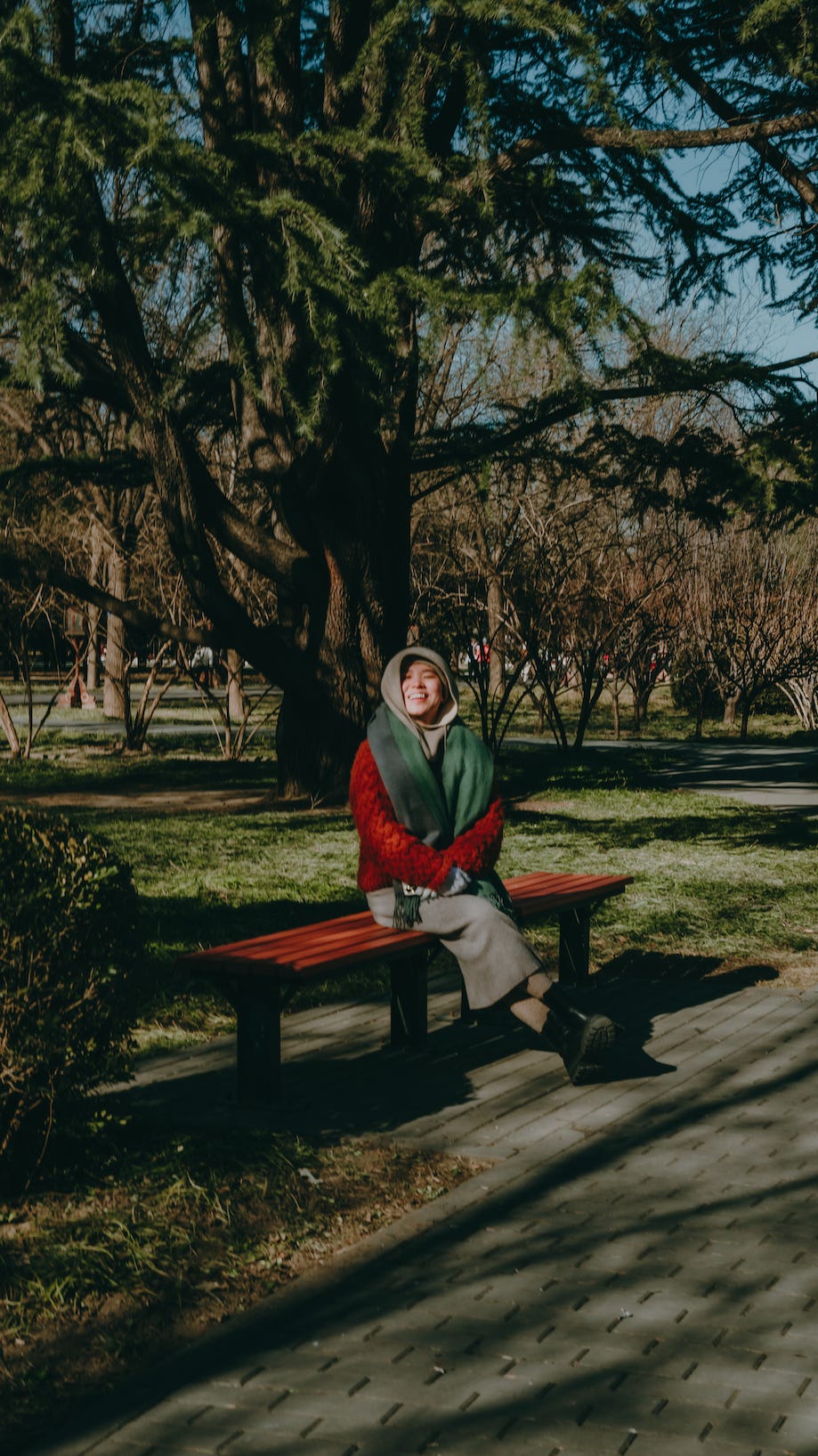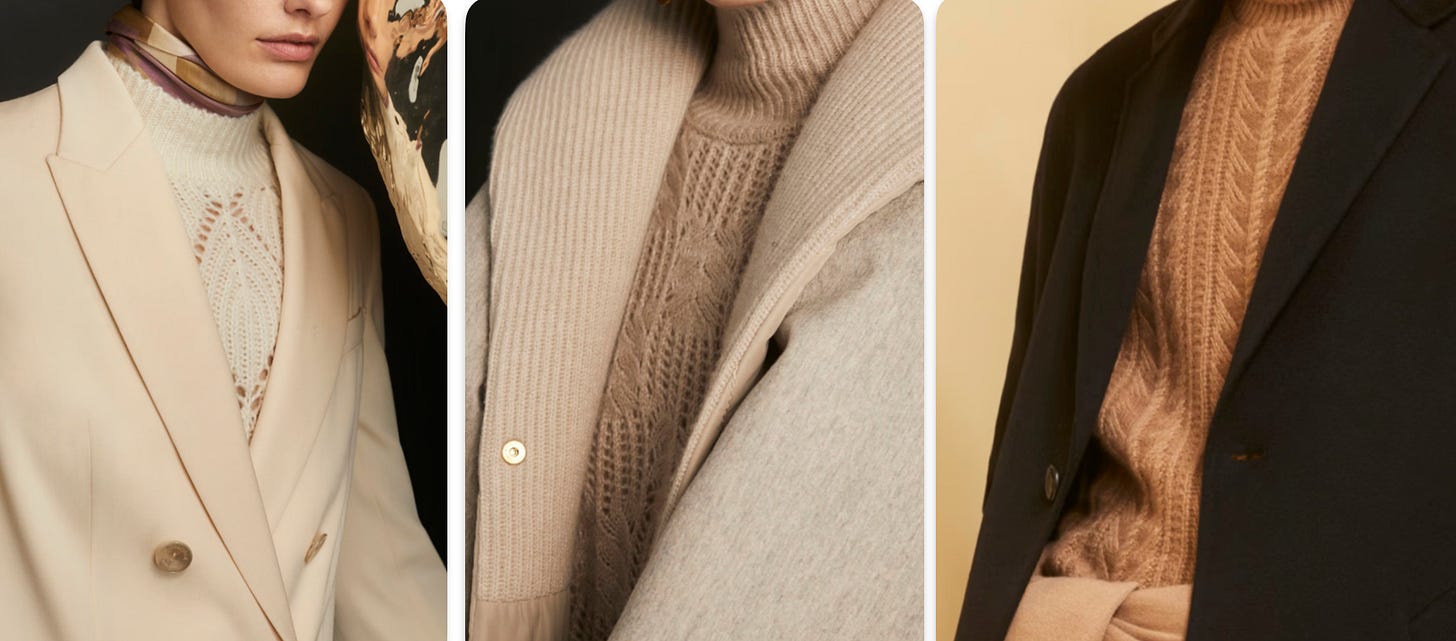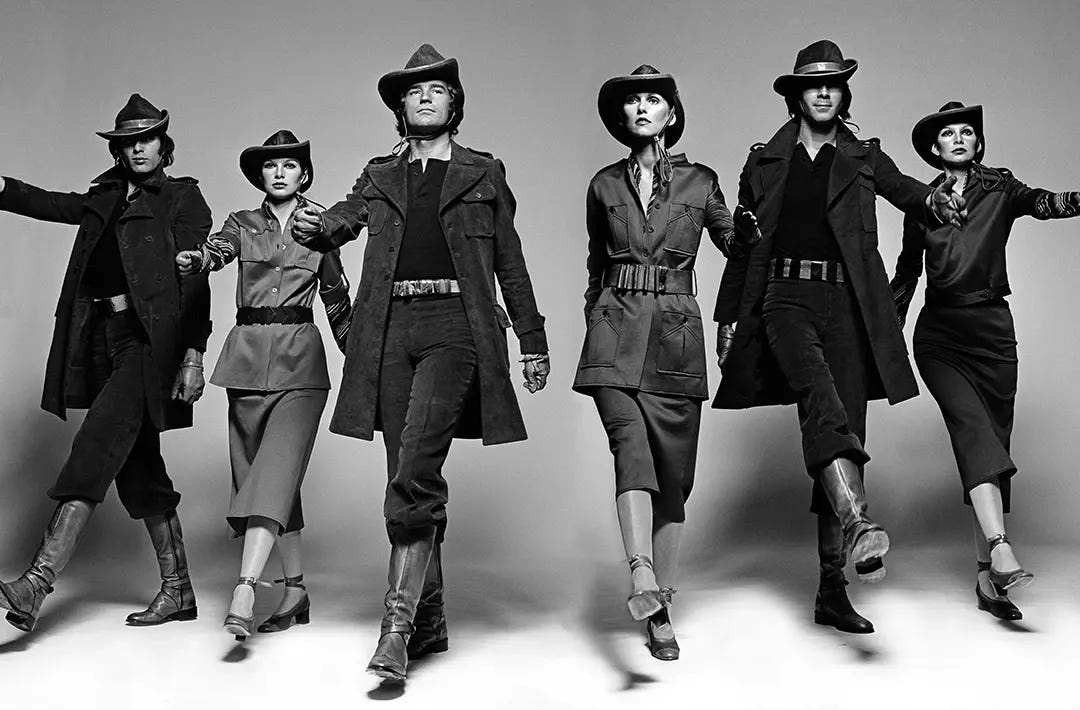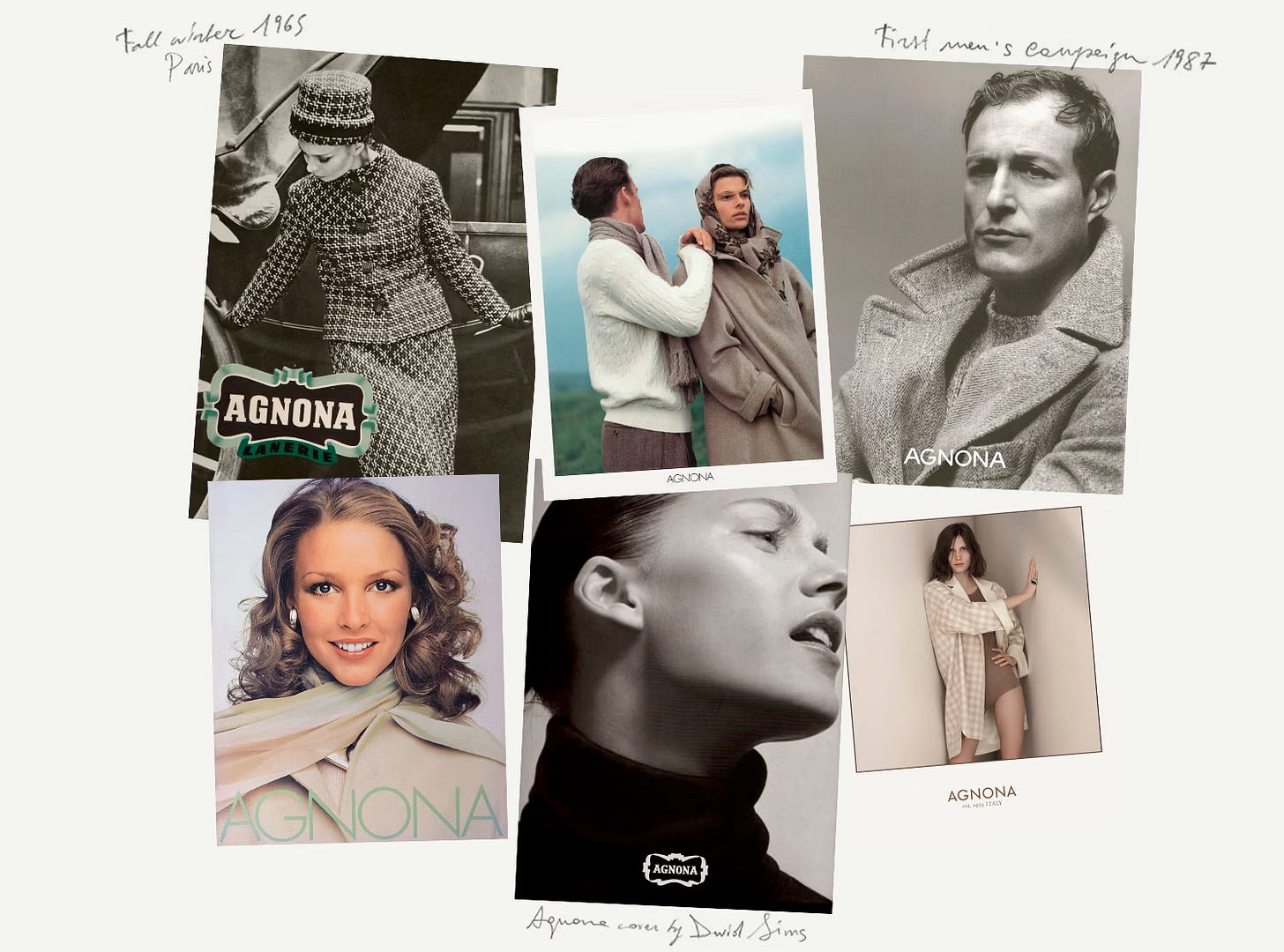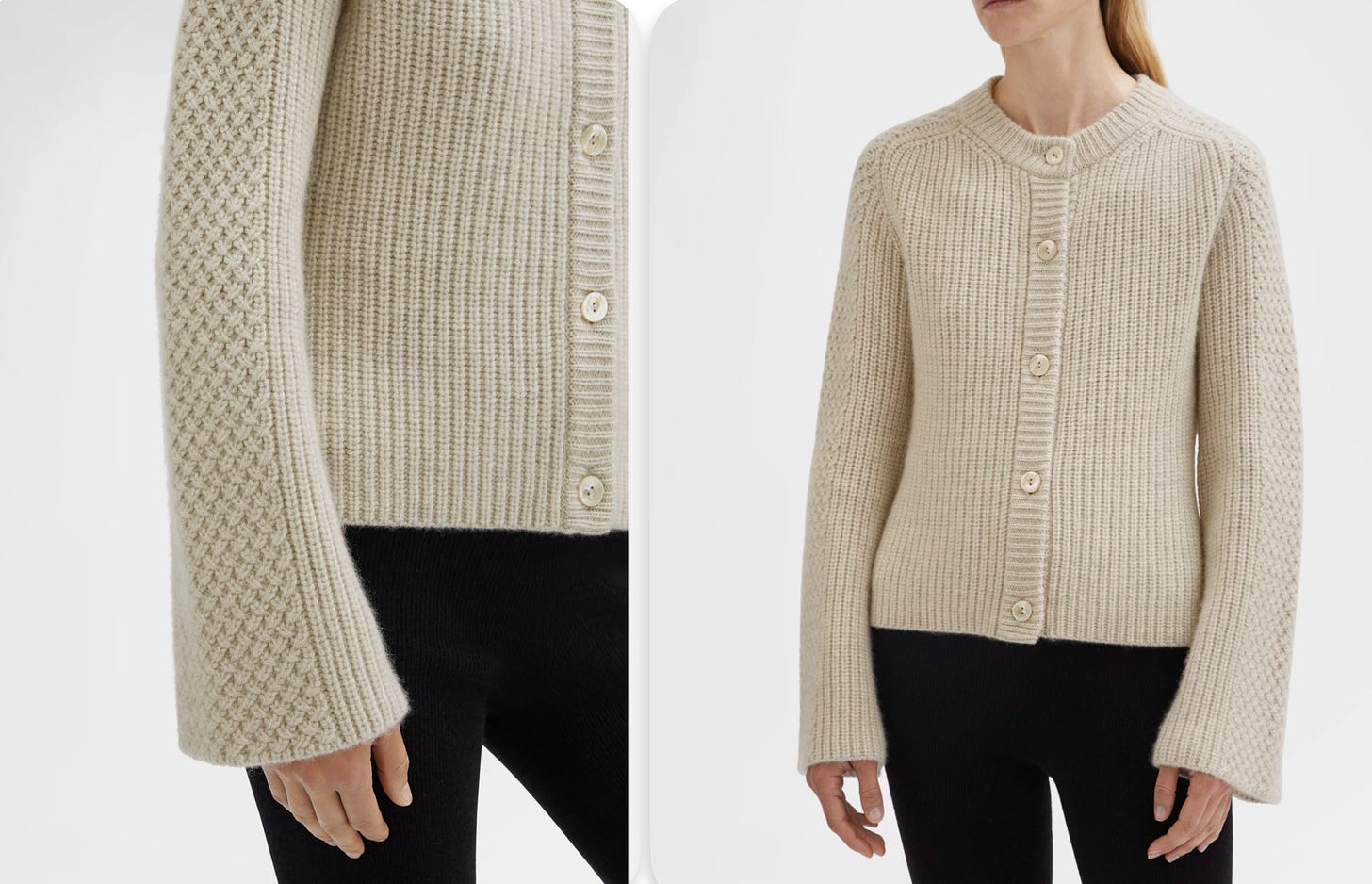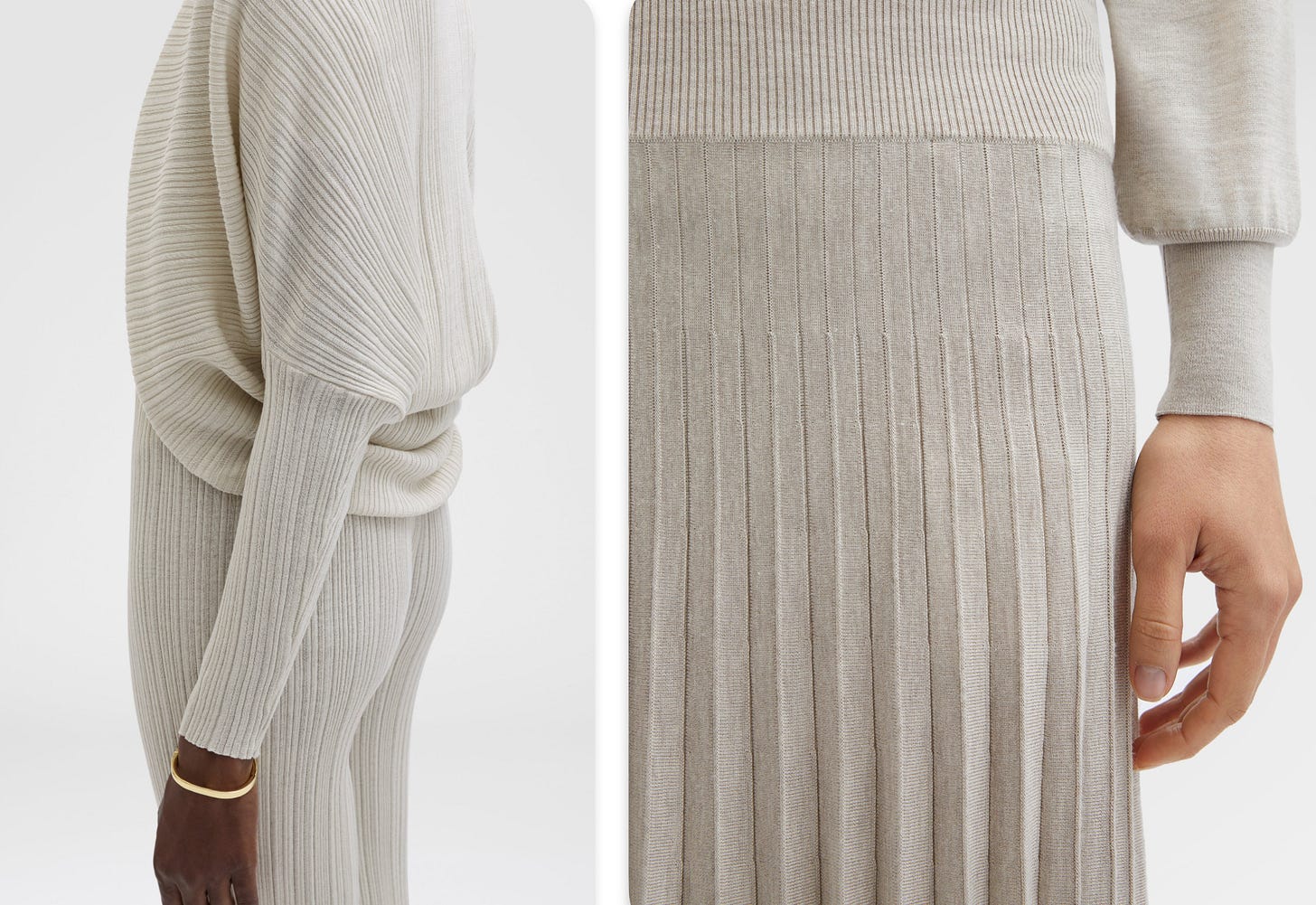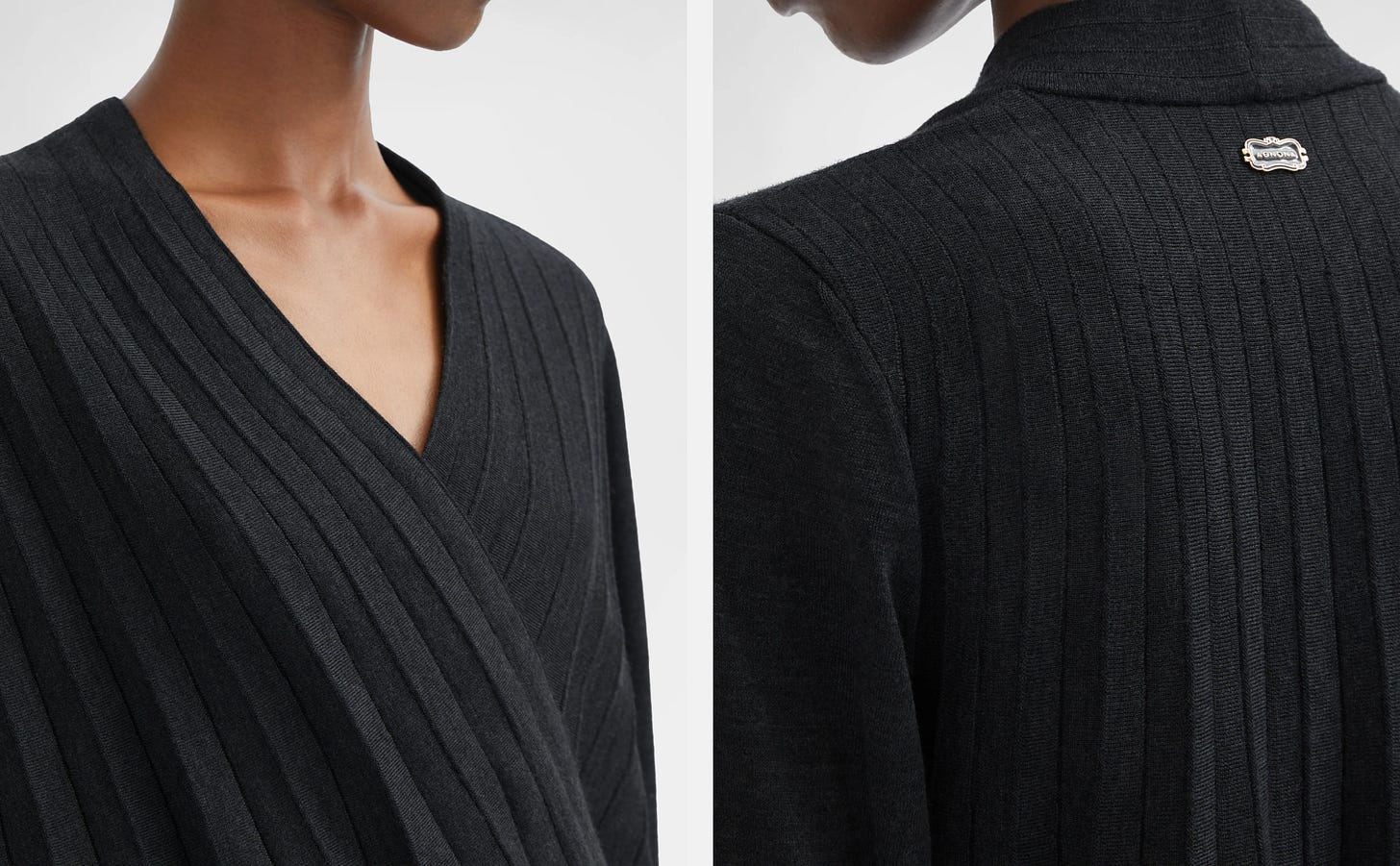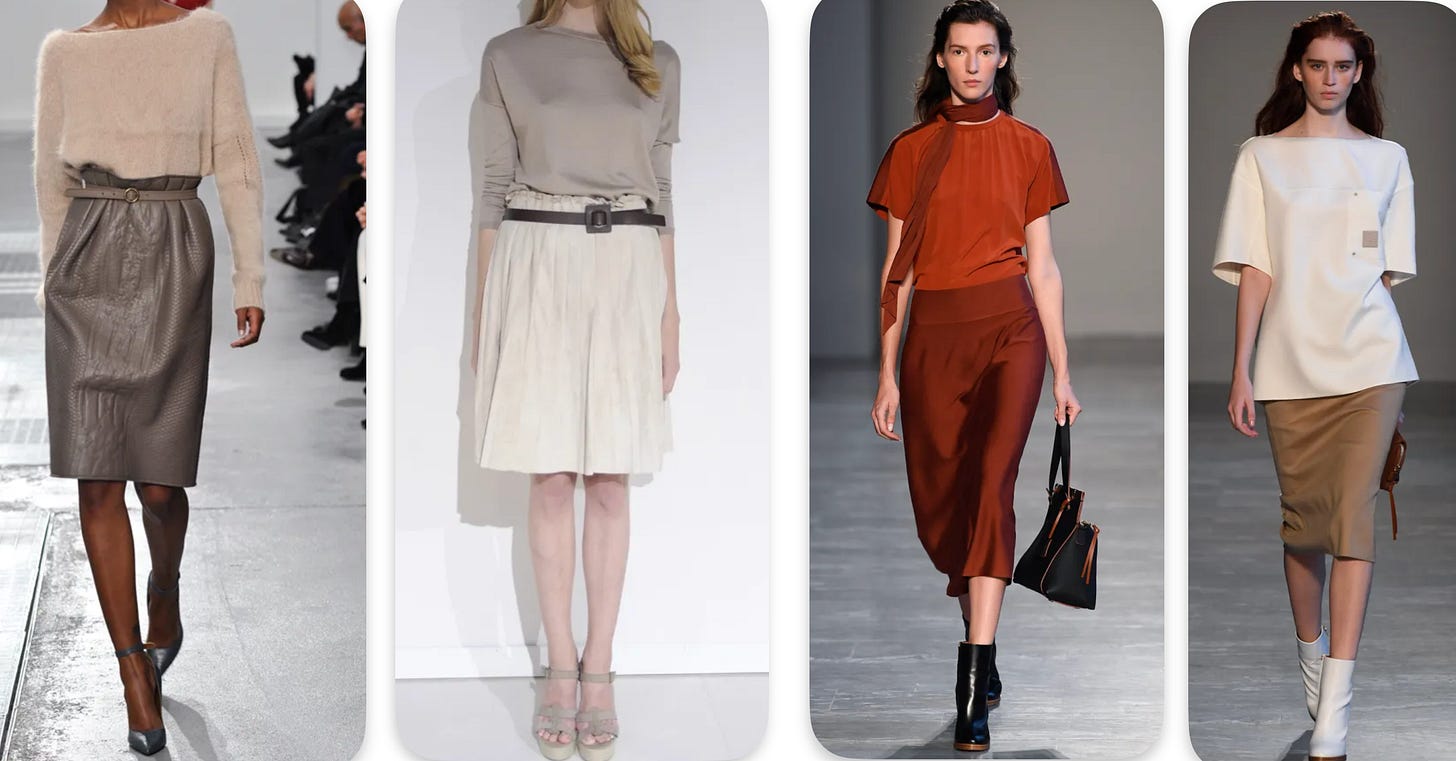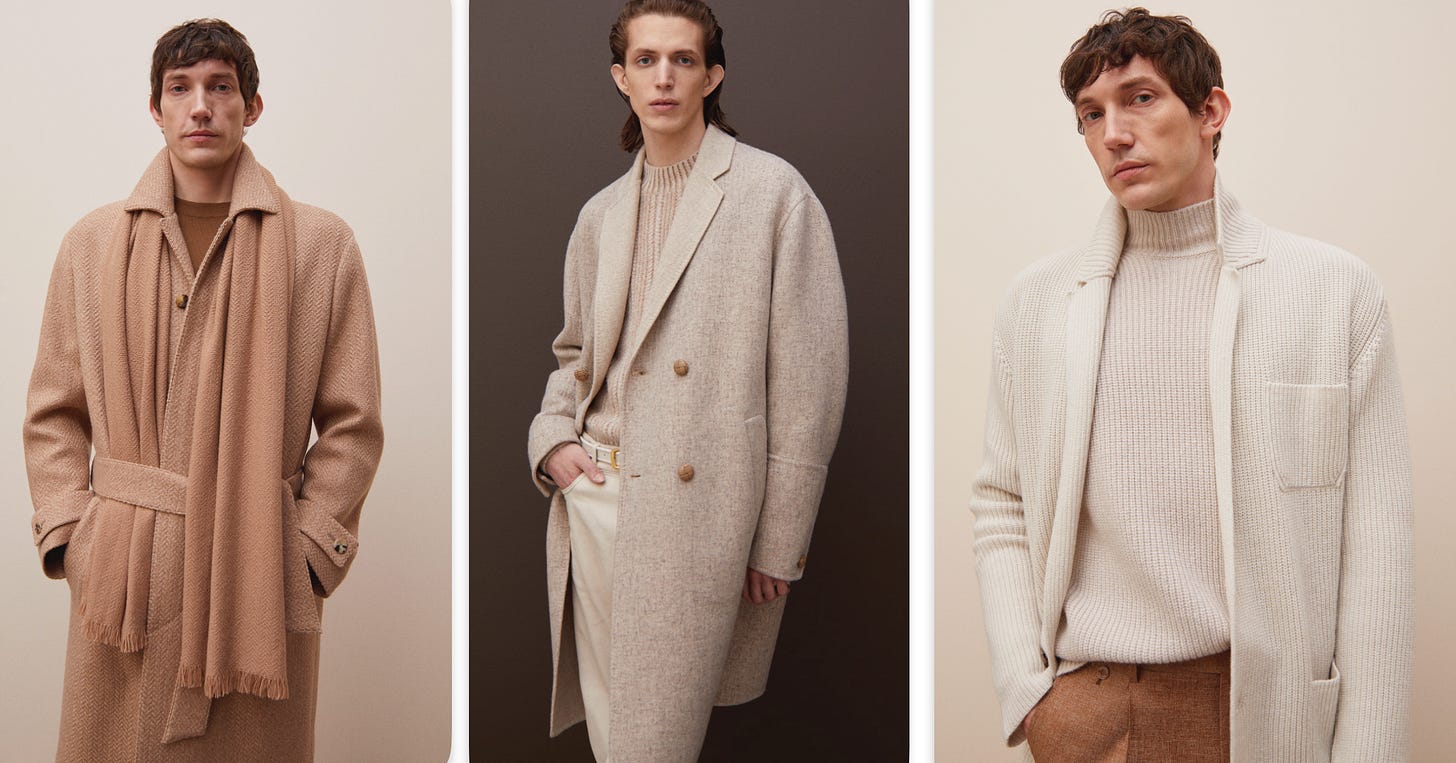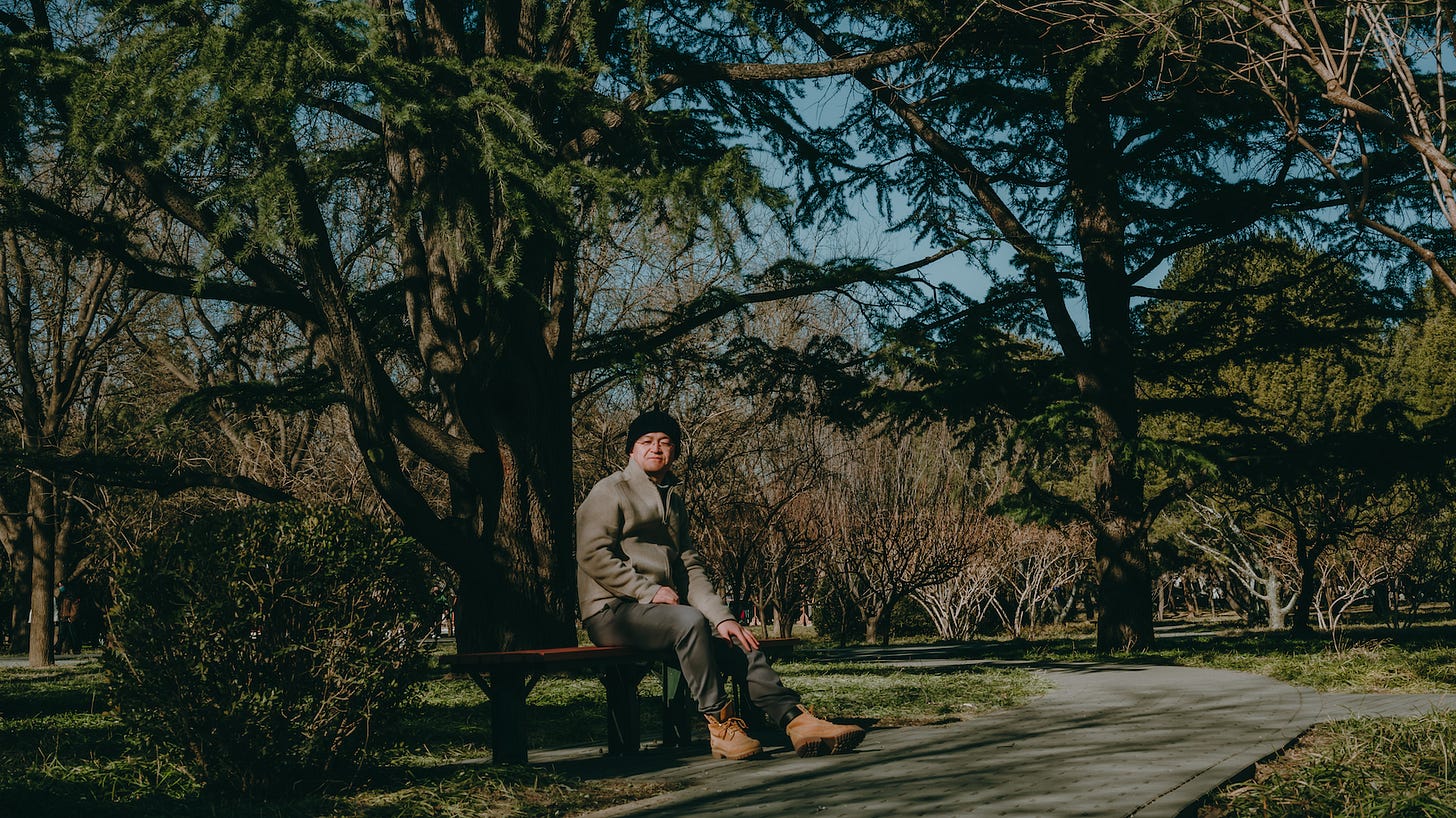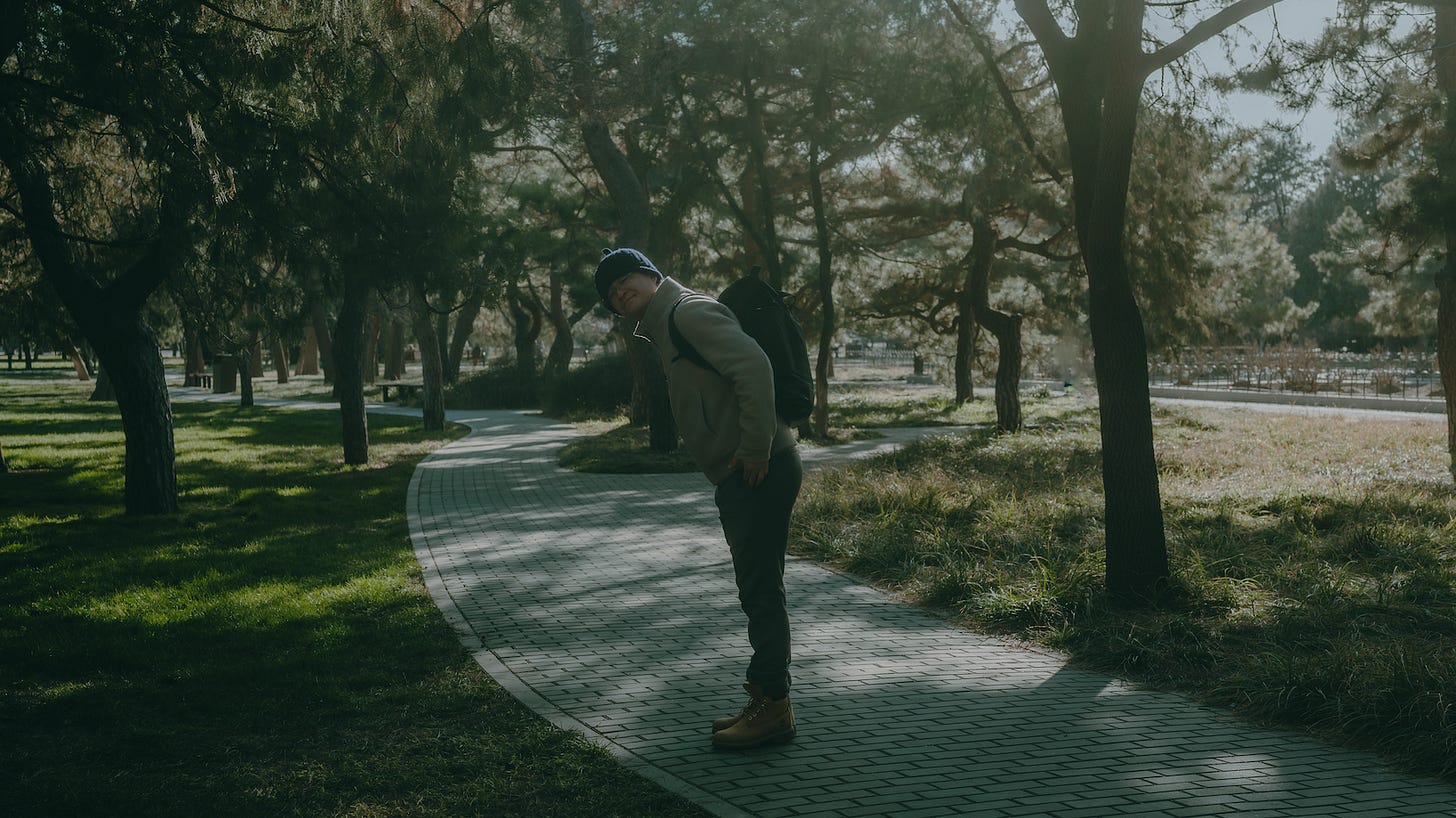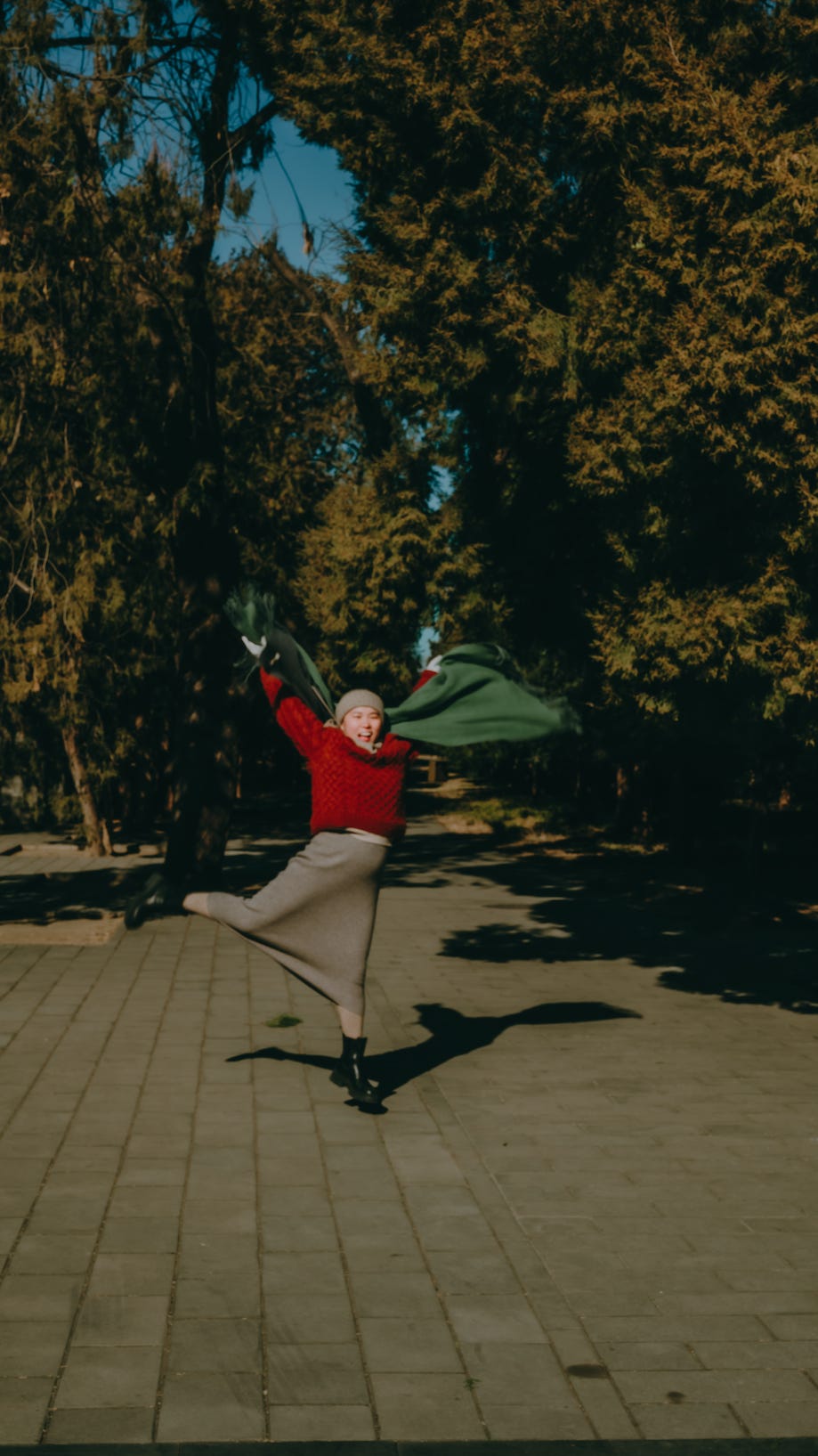Agnona : Zegna-Owned Cashmere and Yarn Brand - Unique Craftsmanship and Cashmere Fashion Runway
Agnona is the only cashmere runway show brand I've written about and I haven't had the chance to browse offline yet.
Agnona entered the Chinese market in 2008, leveraging its parent company Zegna's resources to open its first store in Beijing. In 2015 and 2016, they had offline channels and some direct-sale stores in Beijing SKP and Shanghai Lane Crawford, but like TSE Cashmere, they didn't develop their marketing and eventually exited the Chinese market.
Because they host runway shows every year, and brands with runway shows typically pay close attention to design, I can learn about styling and annual cashmere trends from Agnona's past shows.Another brand with cashmere materials in their autumn-winter runway shows is Hermes, so you'll notice some similarities between Agnona and Hermes' styles.
Additionally, as a world-renowned high-end cashmere yarn brand, Agnona has its own distinctive weaving craftsmanship.
During the over 20 years since being acquired by Zegna, Agnona has remained somewhat low-key, and the Zegna Group hasn't particularly supported Agnona, mainly concentrating resources on Zegna menswear. From 2000 to 2020, Agnona paused its menswear line, and now they've started making menswear again.
My impression is that high-end cashmere brands like Malo, after being acquired by large capital groups, have a somewhat tortuous development. Most cashmere brands still in family hands, while growing slowly and perhaps having average design, continue to maintain their consistent design style.
01
Agnona's current product lines include women's knitwear, coat collections, accessories, and cashmere yarn. The knitting craftsmanship and fashion shows are the two most distinctive aspects of Agnona.
The knitting craftsmanship can be seen in the cashmere sweaters below, and the runway shows will be discussed in section 03.
Agnona's color palette initially and in recent years has focused on natural tones, with white and earth colors being its signature. The brand conveys a calm, elegant quality through these colors, avoiding bright hues (though clothes from 2010-2020 were more colorful). Due to its modern, linear silhouettes, the design reveals rationality and coolness within its elegance.
Agnona has emphasized nature since its founding in 1953, because founder Francesco Ilorini Mo grew up near Lake Orta in the small town of Arola at the foot of the Alps (currently with fewer than 300 inhabitants). Impressed by the beautiful scenery and his family farm's animals, he was particularly amused by chickens wearing diapers to prevent sliding down the mountain slopes.
Francesco Ilorini Mo's mother came from a farming family, and his father worked at a local hydroelectric power station. He began working at the local Sesia Valley textile company as a child designer. With bold designs, he gained support from two local entrepreneurs and founded Lanerie Agnona in 1953.
Sesia Valley (also called Valsesia) is the region through which the Sesia River flows. Besides Agnona, Colombo's founder Luigi Colombo was also born in this area, with Lanificio Colombo's headquarters now located in Borgosesia in the Velsesia valley. Additionally, Pietro Loro Piana established the Loro Piana brand in Quarona, Valsesia, in 1924.
The photo below shows Lake Orta, located in Orta San Giulio, situated in the Alps region bordering Italy and Switzerland, thus resembling Swiss landscapes.
After successfully establishing Agnona, Francesco Ilorini Mo began traveling globally from Tasmania to Peru, and from Mongolia to China, searching for the best animal fibers and collecting vicuna, cashmere, and alpaca. He started visiting Paris, securing fabric orders from Christian Dior, Cristóbal Balenciaga, Pierre Balmain, Hermes, and Yves Saint Laurent.
In 1972, Francesco Ilorini Mo began producing women's wear, reasoning that if high-quality fabrics could enhance any clothing, why not create his own brand? He collaborated with ready-to-wear designers, especially Walter Albini, resulting in Agnona's designs characterized by clean, modern, and linear silhouettes that appear rational and cool.
A brief note on Walter Albini: Though not a widely known brand, it has been acquired by Alsara Investment Group (owned by the Qatari royal family) and is preparing for a relaunch. Alsara is also Valentino's parent company and has recently invested in down jacket brand Khrisjoy and Egyptian niche bag brand Okhtein. Walter Albini is known for models wearing the same clothes regardless of gender, reflecting a fluid approach to traditional gender clothing norms.
Since Francesco Ilorini Mo established ready-to-wear clothing, the brand has featured simple, modern, linear designs. Agnona's women's wear now combines natural color palettes, the elegant softness of cashmere, and modern, rational coolness through its silhouettes - "stand out discreetly".
Later, Agnona expanded its product categories to include menswear, home collections, and accessories.
In 1999, Agnona was acquired by the Italian luxury group Ermenegildo Zegna, becoming its subsidiary. After the acquisition, Agnona was positioned as a women's brand with knitted products as its core, and the menswear line was discontinued.
In 2020, the Zegna Group announced selling 70% of Agnona's shares to the Aimone family (the third-generation Zegna family members, including Laura Zegna's husband and son). Roberto Aimone and his son Stefano Aimone became the brand's executive president and artistic director, respectively, and reopened the menswear line.
02
Agnona, as an Italian brand, manufactures entirely in Italy. Other Italian cashmere brands like Malo and Piacenza also produce locally. In contrast, emerging British, American, and French cashmere brands often manufacture in the UK, China, or Mongolia.
Here are some favorites from their current website:
Bell sleeve cashmere vimini stitch comes in beige and black. I appreciate intricate, textured cashmere knitting techniques like this one, which features ingot stitch on the front and distinctive vimini weaving on the bell sleeves.
The vimini texture is similar to woven bamboo baskets found in rural areas.
Vimini knitting appeared on cardigans and bags in Agnona's 2009 autumn/winter collection.
Another interesting piece is the Fantasy Stitch knit, using a cashmere and silk blend for a lighter feel.
Personally, I think a lower neckline would work better. The knitting technique and fabric composition seem more suitable for spring/summer, as a high-neck might feel uncomfortable.
There's also a short-sleeve piece in Fantasy knit that looks refreshingly cool.
Agnona's Plisse technique differs from TSE Cashmere's, as it's pressed rather than knitted.
Their representative ultra-thin base layer showcases the Plisse technique, available in 5 colors. The fabric is 70% cashmere, 30% silk.
Plisse is used in dresses and cardigans, with fabric combinations including cashmere-silk and cotton-silk, suitable for spring/summer.
A 100% cashmere plisse ensemble:
Note the Agnona logo on the right - the website specifies it's 100% metal. High-end brands excel in details like zippers, tags, and logos, using substantial, glossy materials instead of cheap plastic.
Agnona often places this logo on the large cone.
The logo shape is also used in belt design, similar to Akris, which incorporates its trapezoidal logo shape in belts and zippers.
This jacket has a minimalist cut, reminiscent of Hermes' style - clean, direct lines without excess.
The Double Muretto Cashmere Boxy Jacket comes in beige and bright orange. It features Agnona's proprietary Double Muretto™ cashmere, which combines two cashmere layers through a specific process, creating a more robust, warm, and durable fabric. This material is typically used in coats and jackets for men and women.
The website offers limited products. Some suits use synthetic fabrics, which I won't detail.
Although Agnona restarted menswear in 2020, the current designs and fabrics remain unremarkable. The brand is still more recommended for womenswear.
03
Organizing Agnona's runway images. The last time I saw brands with runway and lookbook were Nehera and Khaite with a quiet luxury style. This is the first time I've seen runway images for a cashmere brand. After reviewing, I discovered that if you want to find the latest cashmere design trends, you can focus on Agnona's cashmere designs, especially after 2020, where Agnona's runway shows have been closely following fashion trends.
Additionally, note that runway images are very different from official website collections. Most runway clothes are not mass-produced for the official website. Runway clothes are typically consumed by industry insiders.
After reviewing Agnona's runway records from 2009 to 2025, I found that a clothing brand's characteristic designs are often consistent, and design details from 2009 might resurface 8-9 years later.
For example, double-layer belts, from left to right are Agnona's runway images from 2009, 2018, and 2020:
Ever since I bought a Toteme Italian double-layer leather belt, I've fallen in love with double-layer belts, which look much better than single-layer wide belts.
In 2009, they liked draping a long scarf on one shoulder as an embellishment, which was also reproduced in the 2019 runway show:
The scarf-style coat popularized by The Row in recent years was already present in Agnona's 2010 winter collection. The left image is Agnona from 2010, the right image is from Agnona's 2024 winter collection:
Long tassels from 2015 were also reproduced in Agnona's 2023 runway show:
You can also see the fashion evolution over these 10+ years. In the past, wide belts and wide-leg pants were popular. Although the wide-leg pants reached the ground, they were still elegant and fitted the body.
From left to right, Agnona from 2011, 2012, 2013 Spring:
Now, wide-leg pants are looser, wider, with straighter lines, and the top is also more relaxed and lazy, not as body-hugging. Agnona 2025 Spring:
Pencil skirt outfits also show the trend changes over time. In the early 2010s, they were more feminine with softer lines. In recent years, the lines of both the top and bottom have become more minimalist and harder:
Although Agnona mainly uses natural colors, the colors and designs from 2014-2017 were quite poor, with only occasional good pieces. From 2018 onwards, they returned to their original natural tones, regaining their high-end feel. From 2020, there was a significant change, moving towards a quiet luxury style:
My four favorite sets from Agnona Spring 2016, 2018, 2019, 2020:
Agnona 2018 Winter:
Agnona 2019 Winter:
Agnona 2020 Winter:
Starting from Agnona 2021 Winter, the official website began updating runway images and introduced menswear. The runway menswear looks much better than the official website:
Agnona 2022 Spring:
Agnona 2022 Winter - see how scarves are becoming popular, with both men's and women's wear adding scarves to increase layering:
Agnona 2023 Winter, still featuring scarves:
Agnona 2024 Winter, again with scarves:
Epilogue
Agnona's cashmere techniques like vimini, plisee, and fantasy stitch, Malo's colorful woven jacquard, TSE Cashmere's textured knitting, Teddy Cashmere, and Piacenza 1733's thistle-dyed brushed llama wool are currently the most distinctive and representative cashmere crafting techniques I've encountered. These brands themselves emphasize these methods. In comparison, Lisa Yang 's brushed and boucle cashmere are considered more mainstream.
Agnona's pattern design is excellent, very concise, and has a Hermes-like style. In contrast, TSE Cashmere's jacket and coat designs are somewhat traditional, appearing somewhat sluggish, with pattern details not as well-executed as Agnona's. TSE's women's cashmere sweaters are better. As for N.Peal, although the brand's level is similar to TSE, it excels in menswear. My personal recommendation is to hold off on men's cashmere ready-to-wear for now, waiting until Agnona develops its menswear line further. Currently, consider N.Peal and Piacenza 1733, with Brunello Cucinelli being the more expensive option.
pamperherself

